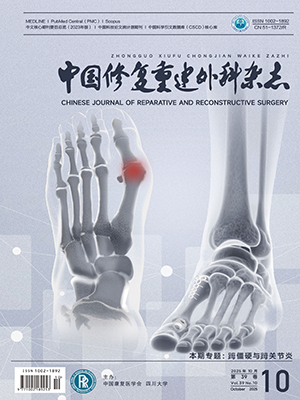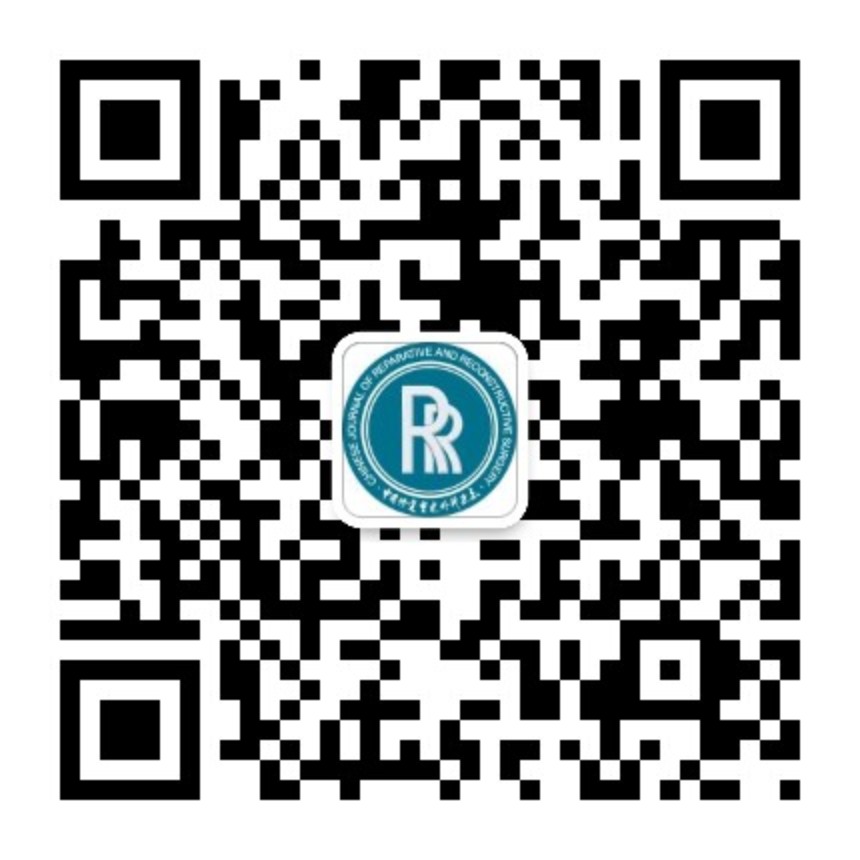| 1. |
Karam RA, Rezk NA, Abdel Rahman TM, et al. Effect of negative pressure wound therapy on molecular markers in diabetic foot ulcers. Gene, 2018, 667: 56-61.
|
| 2. |
Pullar CE, Rizzo A, Isseroff RR. Beta-adrenergic receptor antagonists accelerate skin wound healing: evidence for a catecholamine synthesis network in the epidermis. J Biol Chem, 2006, 281(30): 21225-21235.
|
| 3. |
Steinkraus V, Mak JC, Pichlmeier U, et al. Autoradiographic mapping of beta-adrenoceptors in human skin. Arch Dermatol Res, 1996, 288(9): 549-553.
|
| 4. |
Albrecht H, Yang HY, Kiuru M, et al. The beta 2 adrenergic receptor antagonist iimolol improves healing of combined burn and radiation wounds. Radiat Res, 2018, 189(4): 441-445.
|
| 5. |
Satterfield KR, Chambers CB. Current treatment and management of infantile hemangiomas. Surv Ophthalmol, 2019, 64(5): 608-618.
|
| 6. |
Thomas B, Kurien JS, Jose T, et al. Topical timolol promotes healing of chronic leg ulcer. J Vasc Surg Venous Lymphat Disord, 2017, 5(6): 844-850.
|
| 7. |
Dasu MR, Ramirez SR, La TD, et al. Crosstalk between adrenergic and toll-like receptors in human mesenchymal stem cells and keratinocytes: a recipe for impaired wound healing. Stem Cells Transl Med, 2014, 3(6): 745-759.
|
| 8. |
Romana-Souza B, Porto LC, Monte-Alto-Costa A. Cutaneous wound healing of chronically stressed mice is improved through catecholamines blockade. Exp Dermatol, 2010, 19(9): 821-829.
|
| 9. |
Gulcan E, Ilhan D, Toker S. Nebivolol might be beneficial in the prevention and treatment of diabetic neuropathy. Am J Ther, 2016, 23(1): e240.
|
| 10. |
Zheng Z, Liu Y, Yang Y, et al. Topical 1% propranolol cream promotes cutaneous wound healing in spontaneously diabetic mice. Wound Repair Regen, 2017, 25(3): 389-397.
|
| 11. |
Bhadri N, Razdan R, Goswami SK. Nebivolol, a β-blocker abrogates streptozotocin-induced behavioral, biochemical, and neurophysiological deficit by attenuating oxidative-nitrosative stress: a possible target for the prevention of diabetic neuropathy. Naunyn Schmiedebergs Arch Pharmacol, 2018, 391(2): 207-217.
|
| 12. |
Romana-Souza B, Nascimento AP, Monte-Alto-Costa A. Propranolol improves cutaneous wound healing in streptozotocin-induced diabetic rats. Eur J Pharmacol, 2009, 611(1-3): 77-84.
|
| 13. |
Lev-Tov H, Dahle S, Moss J, et al. Successful treatment of a chronic venous leg ulcer using a topical beta-blocker. J Am Acad Dermatol, 2013, 69(4): e204-e205.
|
| 14. |
Romana-Souza B, Otranto M, Vieira AM, et al. Rotational stress-induced increase in epinephrine levels delays cutaneous wound healing in mice. Brain Behav Immun, 2010, 24(3): 427-437.
|
| 15. |
Kuebler U, Wirtz PH, Sakai M, et al. Acute stress reduces wound-induced activation of microbicidal potential of ex vivo isolated human monocyte-derived macrophages. PLoS One, 2013, 8(2): e55875.
|
| 16. |
Romana-Souza B, Otranto M, Almeida TF, et al. Stress-induced epinephrine levels compromise murine dermal fibroblast activity through β-adrenoceptors. Exp Dermatol, 2011, 20(5): 413-419.
|
| 17. |
Sivamani RK, Pullar CE, Manabat-Hidalgo CG, et al. Stress-mediated increases in systemic and local epinephrine impair skin wound healing: potential new indication for beta blockers. PLoS Med, 2009, 6(1): e12.
|
| 18. |
Sivamani RK, Shi B, Griffiths E, et al. Acute wounding alters the beta2-adrenergic signaling and catecholamine synthetic pathways in keratinocytes. J Invest Dermatol, 2014, 134(8): 2258-2266.
|
| 19. |
Pullar CE, Grahn JC, Liu W, et al. Beta2-adrenergic receptor activation delays wound healing. FASEB J, 2006, 20(1): 76-86.
|
| 20. |
Koizumi H, Yasui C, Fukaya T, et al. Beta-adrenergic stimulation induces intracellular Ca++ increase in human epidermal keratinocytes. J Invest Dermatol, 1991, 96(2): 234-237.
|
| 21. |
Tu CL, Celli A, Mauro T, et al. Calcium-sensing receptor regulates epidermal intracellular Ca2+ signaling and re-epithelialization after wounding. J Invest Dermatol, 2019, 139(4): 919-929.
|
| 22. |
Huo J, Sun S, Geng Z, et al. Bone marrow-derived mesenchymal stem cells promoted cutaneous wound healing by regulating keratinocyte migration via β2-adrenergic receptor signaling. Mol Pharm, 2018, 15(7): 2513-2527.
|
| 23. |
Pullar CE, Manabat-Hidalgo CG, Bolaji RS, et al. Beta-adrenergic receptor modulation of wound repair. Pharmacol Res, 2008, 58(2): 158-164.
|
| 24. |
Kim MH, Gorouhi F, Ramirez S, et al. Catecholamine stress alters neutrophil trafficking and impairs wound healing by β2-adrenergic receptor-mediated upregulation of IL-6. J Invest Dermatol, 2014, 134(3): 809-817.
|
| 25. |
Djanani A, Kaneider NC, Meierhofer C, et al. Inhibition of neutrophil migration and oxygen free radical release by metipranolol and timolol. Pharmacology, 2003, 68(4): 198-203.
|
| 26. |
O’Leary AP, Fox JM, Pullar CE. Beta-adrenoceptor activation reduces both dermal microvascular endothelial cell migration via a cAMP-dependent mechanism and wound angiogenesis. J Cell Physiol, 2015, 230(2): 356-365.
|
| 27. |
Tang JC, Dosal J, Kirsner RS. Topical timolol for a refractory wound. Dermatol Surg, 2012, 38(1): 135-138.
|
| 28. |
Pullar CE, Le Provost GS, O’Leary AP, et al. β2AR antagonists and β2AR gene deletion both promote skin wound repair processes. J Invest Dermatol, 2012, 132(8): 2076-2084.
|
| 29. |
Spiller KL, Anfang RR, Spiller KJ, et al. The role of macrophage phenotype in vascularization of tissue engineering scaffolds. Biomaterials, 2014, 35(15): 4477-4488.
|
| 30. |
Kisiel MA, Klar AS. Isolation and culture of human dermal fibroblasts. Methods Mol Biol, 2019, 1993: 71-78.
|
| 31. |
Pullar CE, Isseroff RR. The beta 2-adrenergic receptor activates pro-migratory and pro-proliferative pathways in dermal fibroblasts via divergent mechanisms. J Cell Sci, 2006, 119(Pt 3): 592-602.
|
| 32. |
Souza BR, Santos JS, Costa AM. Blockade of beta1- and beta2-adrenoceptors delays wound contraction and re-epithelialization in rats. Clin Exp Pharmacol Physiol, 2006, 33(5-6): 421-430.
|
| 33. |
López-López N, González-Curiel I, Trevi?o-Santa Cruz MB, et al. Expression and vitamin D-mediated regulation of matrix metalloproteinases (MMPs) and tissue inhibitors of metalloproteinases (TIMPs) in healthy skin and in diabetic foot ulcers. Arch Dermatol Res, 2014, 306(9): 809-821.
|
| 34. |
Berlanga-Acosta J, Schultz GS, López-Mola E, et al. Glucose toxic effects on granulation tissue productive cells: the diabetics’ impaired healing. Biomed Res Int, 2013, 2013: 256043.
|
| 35. |
Shedden AH, Laurence J, Barrish A, et al. Plasma timolol concentrations of timolol maleate: timolol gel-forming solution (TIMOPTIC-XE) once daily versus timolol maleate ophthalmic solution twice daily. Doc Ophthalmol, 2001, 103(1): 73-79.
|
| 36. |
Khunger N, Pahwa M. Dramatic response to topical timolol lotion of a large hemifacial infantile haemangioma associated with PHACE syndrome. Br J Dermatol, 2011, 164(4): 886-888.
|
| 37. |
Boos MD, Castelo-Soccio L. Experience with topical timolol maleate for the treatment of ulcerated infantile hemangiomas (IH). J Am Acad Dermatol, 2016, 74(3): 567-570.
|
| 38. |
Khouri C, Jouve T, Blaise S, et al. Peripheral vasoconstriction induced by β-adrenoceptor blockers: a systematic review and a network meta-analysis. Br J Clin Pharmacol, 2016, 82(2): 549-560.
|




